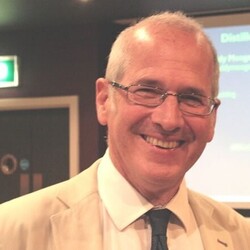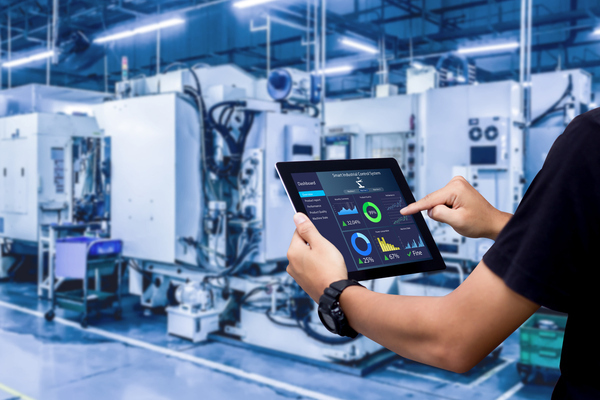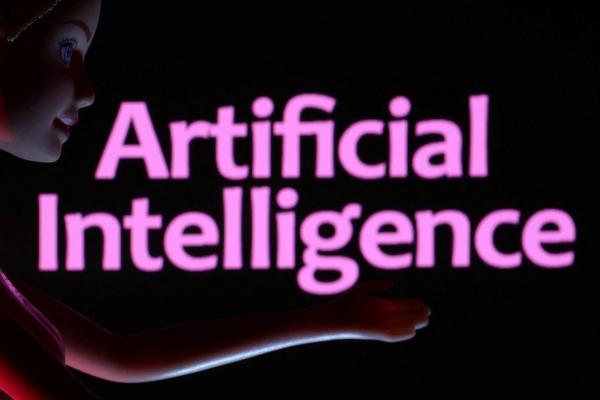Optimising business processes with generative AI

A great deal has been written in recent months about the powerful opportunities generative AI tools are providing for marketers. GenAI can produce sophisticated chatbots that appear almost human, advertising copy that really sells, sophisticated Google AdWords techniques, social media posts that have a high chance of being shared. Engaging brand imagery, advertising jingles and full-length video adverts can also be created.
GenAI can even be used for marketing ideation, suggesting creative concepts for campaigns and constructing new product ideas and advertising straplines.
But much less consideration has been given to the way that GenAI can be used for internally facing functions. And yet it is here that much of the value of this technology lies.
Enhancing product sales
Let’s start at the beginning, with product design and development. Generative AI can be used for ideation, to develop new products and services by creating innovative concepts and designs for new commercial opportunities. AI-powered market analysis, using extensive structured and unstructured data, can deliver rapid and accurate insights that ensure any new products developed will fit the market.
Prototypes and product mock-ups can be created in hours instead of days and weeks. Product designs can be optimised for factors such as cost, weight and material availability. And, over time, by leveraging machine learning algorithms, AI can be used to analyse customer feedback and behaviour data, to provide information about the strengths and weaknesses of products, facilitating targeted improvements.
Once products have been launched, the sales team can be supported with AI tools. In a B2B context, customer research, personalised outreach and automated proposal generation can save sales professionals time and increase conversion rates. For example, Salesforce uses generative AI to generate personalised sales leads for its sales team and their customers. And, in the holiday season, if a sale is being held up by a prospect’s need for further information, automated real-time query answering can come to the rescue.
Finally, once the sale has been finalised, GenAI can provide a warm welcome with personalised training content, highlighting relevant best practices to enhance customer satisfaction.
The pricing of new and existing products can be improved with AI tools. Retailers can analyse large quantities of market data, including competitor prices, substitute product prices, customer behaviour and long-term market trends, to uncover the most effective pricing strategies. Dynamic pricing can also be enhanced with instant price adjustments based on shifting market demand, inventory levels and seasonal factors.
More controversially, personalised prices, perhaps associated with personalised bundles of goods, can be offered to regular shoppers, although there are dangers here around discrimination and unfairness.
GenAI can also be used for supply chain management in several ways including demand forecasting and inventory optimisation. For example, Walmart has used generative AI to optimise its pricing and inventory levels: costs are down and customer satisfaction is rising. Improved warehouse layouts that allow for more efficient picking, optimised delivery routes and fleet and equipment predictive maintenance also drive value.
Facilitating the HR function
Another area where generative AI is showing great promise is that of human resource management.
Recruiters can use AI to generate new job descriptions or to review CVs and applications. Questions from candidates can be fielded by automated systems such as chatbots, increasing candidate satisfaction with processes that can sometimes be long and frustrating. A warning though: AI has in the past been shown to promote bias in recruitment, which is why, as is so often the case, AI should be treated as a tool to help humans rather than a replacement for them.
Once job candidates have joined an organisation, their onboarding and future management can also be enhanced with AI. Employees can benefit from “self-service”, for example, when requesting holidays, asking questions about terms and conditions or requesting training. And the training they receive can be personalised with interactive e-learning modules and automated progress tracking. These can be highly effective: Walmart Logistics has reported a 15 per cent increase in knowledge retention when employees use an AI-powered e-learning platform.
Improving management processes
Sales and HR make interesting but specialised examples of ways businesses can derive value from using generative AI. However, the reality is that there is value to be had across the organisation, where AI can be used to automate repetitive and time-consuming tasks, such as data entry and report generation. This can free up employees to focus on more strategic and value-added work.
Perhaps more significantly, generative AI can improve decision-making: using it to analyse large datasets can result in the identification of patterns and trends that would be difficult for humans to spot. For example, in procurement, where businesses have to balance multiple variables such as cost, speed of delivery, environmental impact and trustworthiness of the supplier, the analysis of the options, whether manual or computer-assisted, can take a great deal of time and effort. GenAI can cut through this by instantly analysing the different variables, together with others found in corporate and public databases, to provide a prioritised choice of suppliers along with explanations of pros and cons.
The future of generative AI in business
Despite generative AI’s relatively new status as a mainstream technology, many businesses are already exploring its benefits. More than a third of the organisations surveyed for the IBM Global AI Adoption Index 2022 say they are using it, while the figure for marketers surveyed in a recent Salesforce project was nearly two thirds.
This increased use does come with problems. AI can have cyber-security implications, particularly if confidential corporate data is used to feed third-party AI systems. There are also substantial privacy implications, something that is driving a number of legislatures such as the EU to consider regulating AI.
Nonetheless, despite these difficulties, businesses will only increase their use of generative AI over the coming months. While the technology is a very long way from becoming sentient and matching human intelligence, it is rapidly improving in its ability to interpret human language and emotions. More and more it will be capable of providing engaging content that appears empathetic and trustworthy. By doing so it will further increase its value to business.
Any organisation that is not at least experimenting with the use of generative AI to provide value and improve outcomes will inevitably find its opportunities for growth extremely limited in the future.

Jeremy Swinfen-Green
Most Viewed
Winston House, 3rd Floor, Units 306-309, 2-4 Dollis Park, London, N3 1HF
23-29 Hendon Lane, London, N3 1RT
020 8349 4363
© 2025, Lyonsdown Limited. Business Reporter® is a registered trademark of Lyonsdown Ltd. VAT registration number: 830519543





